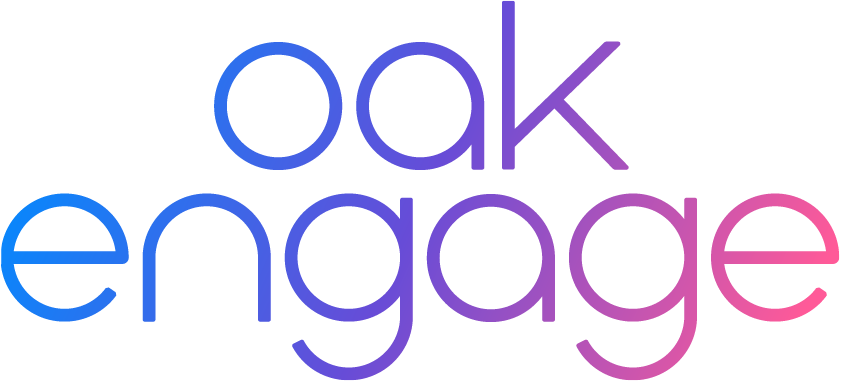Being able to demonstrate the real impact that internal comms have on business performance and outcomes is the best way that you can gain and maintain buy-in from leaders. We know first-hand the benefits that an engaged workforce can have on the bottom line. Measuring ROI in internal comms is something we get very excited about because we know just how much value that robust, effective strategies can contribute towards wider business success.
We all know that an engaged workforce is more productive. Uniting, connecting and communicating directly with colleagues with a modern intranet and employee app can reduce employee turnover and a slick, digitalised onboarding process can improve retention of new starters. These are the stats your leadership team is looking for when evaluating internal comms return on investment, whether that’s to gather more budget for your team or to demonstrate the real value your team brings to the company.
In this article we’ll explore:
-
Defining internal comms ROI
-
Why we need to prove internal comms ROI to the C-Suite
-
Working out the ROI of internal communications for leaders
Defining internal comms return on investment
Across every other business area, departments will have to showcase the value of the tools and tech they use, demonstrating the tangible benefits and value it brings to the business. Why should it be any different for internal comms?
Your internal audiences are your colleagues in all corners of the business and the more you can keep them motivated, engaged and encourage connectivity, the better their outputs will be.
Internal comms return on investment can be defined as the measurable value on business and employee outcomes gained from effective strategies and tools. This can encompass cost savings from internal comms platforms that enable you to streamline operations, processes and create a central business hub that’s accessible to all colleagues.
Why do we need to prove internal comms value to the C-Suite?
The short answer? Leaders and those who hold the purse strings will want to know that everything they invest in has a positive impact on performance. Anything that is not used to its full potential or doesn’t seem to make much of an impact will be reviewed and stopped. It makes good business sense, we’re not disputing that!
What we really need to showcase is the bigger picture of the impact that internal comms has on employee morale, drive and willingness to contribute their best efforts every time. By nurturing social connectivity, bringing company values and culture to life can reinvigorate your people to remember why their work matters and will ultimately make them more productive. It’ll also make them want to stick around at the company for longer, so you have a better chance of retaining your best staff.
Working out the ROI of internal communications for leaders
Let’s look at the stats and outcomes that your leaders want to see. The data that will make them realise just how effective your internal comms strategy is in connecting and engaging colleagues with company updates and initiatives.
Productivity
In our recent reports, declining productivity and employee reluctance to go ‘above and beyond’ were key indicators of comms problems. 19% of people were stressed from overworking, not helped by the fact that up to 9.3 hours of an employee’s working week can be wasted just finding the resources to be able to do their jobs.
‘Quiet quitting’ has a three pronged impact of reduced productivity, reduced efficiency and reduced quality of work. Disengaged workers are reported to make up to 60% more errors and the cost of quiet quitting can be almost as much as the cost of people actually leaving.
All of these factors can reduce employee motivation which can affect colleague, supplier and customer relationships. This can have a direct impact on revenue when things go wrong.
So, how do we demonstrate internal comms return on investment against productivity?
Modernising business processes to simplify how people do their jobs and get important messages to people quickly, is of paramount importance. How can you expect your people to stay up to date with resources, documents, emails and more when there are multiple versions across multiple platforms? Consolidating everything into one trusted source of information will massively improve the employee experience and streamline your onboarding process, which can improve productivity by 70%.
A conscious effort to improve morale through social and community initiatives and connecting people no matter where they are based, can help employers to reignite a spark in and rebuild employee motivation.
Improved employee retention
Replacing people is expensive. The typical cost for back-filling a role can be up to 70% of the annual salary. Reducing turnover slashes recruitment costs and minimises the risk of knowledge loss from experienced people leaving.
This is the first area in which employee engagement ROI comes into play. A modern intranet platform creates a culture that fosters employee engagement and appreciation, offers training resources and ensures easy access to vital tools and information, increasing employee satisfaction.
Our state of IC report found that 46% of communicators believe that poor internal communications leads to staff attrition.
By overhauling your internal comms processes, strategy and platforms for delivering these comms, your people will be more engaged. When they feel part of the bigger picture, they’re more driven to perform and work towards shared goals.
Digital natives have high expectations for workforce tech. With Gen Z and Millennials expected to make up almost 60% of the global workforce by 2030, organisations of all sizes need to adapt, catering to how digital natives work and communicate.
To identify hurdles or roadblocks with current practices or platforms, consider auditing your existing comms or employee journey mapping to identify pain points through the cycle from recruitment to exit. You can pair these pain points with statistics on recruitment and retention from your HR team to back up your intranet business case.
Recommended reading 📚: Employee journey mapping template
Operational efficiency
An easy-to-navigate digital workplace hub enables you to centralise all communications, documents and resources for your people, enabling them to find everything they need with ease. By embedding HR and IT support within your intranet with a useful ticketing system, you can help your people stay on top of queries efficiently and securely. Sevita’s ‘I have a question’ page has saved managers countless hours with their single location to ask HR and IT questions when they can’t find the answer elsewhere on the intranet.
Improved and informed decision making
Don’t make decisions based on guess-work. With complete analytics of most-searched queries or most-used resources, you can identify areas of focus, whether these are to be addressed by HR, comms teams, leadership or IT.
House employee satisfaction surveys within your intranet. This saves on the costs of using external providers, but also saves time with an extremely easy to build survey feature that you can tailor to get the actionable insights you need to improve your internal comms, initiatives or employee engagement.
By seeking out specific results, your senior stakeholders can have clear insights that can back up future decisions that will impact your people. Investing time and money into providing what your people actually like, want or need, not what you assume they might, will provide further intranet ROI and improve your employee engagement scores over time.
Cost savings from internal comms platforms
Maintaining multiple systems and software solutions is expensive and challenging to manage. Modern platforms can provide immediate intranet ROI results because they can integrate everything you need, reducing spend on licences for duplicate systems or updating legacy platforms.
Modern intranets are intuitive and easy for internal comms teams to use, enabling reduced developer workload and empowering individuals throughout the business to update their dedicated areas of the site.
Regulation and policy compliance
Another key benefit of an intranet is the security that it can bring for even your most sensitive documents with controlled, role-based access to data that intranet managers can set.
Organisations across a wide range of industries house sensitive data on employees and customers and need to remain compliant. This makes them prime targets for breaches which can result in hefty penalties and reputational damage. The average cost of a data breach for a business is £3.4 million, therefore protecting against this internally provides intranet ROI in itself.
Ensure that your people only have access to the areas of your intranet that they will use, keeping sensitive information for specific eyes only. Have confidence that the right people are logging in with a secure Single Sign-On.
Oak has built a robust security framework to meet the specific needs of our customers. Our ISO 27001 and Cyber Essentials Plus certifications demonstrate our ongoing commitment to implementing the highest standards of information security.
Proving the ROI of internal communications
By establishing a single trusted platform for internal comms, you can build trust that will encourage your people to pay attention. Enable colleagues to learn more about each other, celebrate, communicate and collaborate with people throughout the organisation, not just those in their team.
You can’t expect them to do it off their own back; an intranet platform is essential in facilitating this. Invest in the best interests of your people and simplify processes with the support of employee-focused tech and you will not only see your intranet ROI continue to climb, but you might even find out more about your people and what makes them so great at what they do.
We have helped big brands such as Burger King, ScS and NatWest Group to improve employee communication and the intranet ROI is clear in their success. Ready to get buy-in from senior leaders? We’re happy to show you what we can do.



